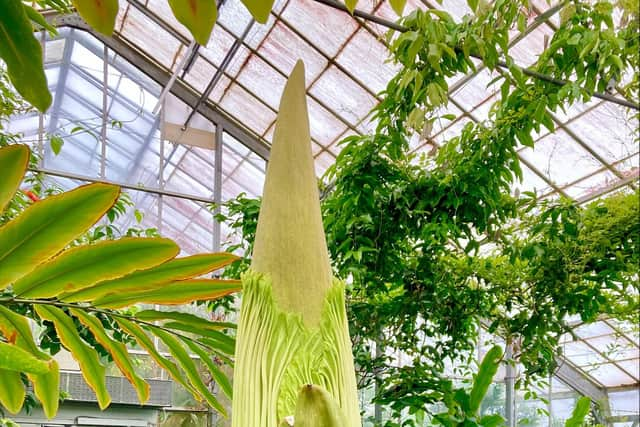New Reekie: The world's most pungent plant is about to burst into bloom in Edinburgh
The spectacular Amorphophallus titanum (titan arum) is one of the star attractions at the Royal Botanic Garden Edinburgh (RBGE).
The rare and endangered plant, which produces one of the world's largest flowers, is known as the "corpse flower" as it emits a whiff of rotting flesh for a short time after opening up to attract pollinating insects.
Advertisement
Hide AdAdvertisement
Hide AdThose who have experienced the stench have also compared it with rotting food and fish, old bins, sweaty shoes and sewage.


The RBGE was given its specimen in 2003 when it was a corm the size of an orange. In 2010 it weighed 153.9kg, making it the largest ever recorded.
It was nurtured in a special tropical glasshouse for 12 years before finally flowering for the first time in 2015, earning the nickname "New Reekie" among staff.
Researchers were delighted when it flowered again in 2017 and 2019. But after three successes in 20 years, they say this could be its final smelly bloom.
Sadie Barber, Research Collections Manager at RBGE, said: "New Reekie continues to surprise us - now 20 years old and about to flower for the fourth time.
"We expect it to reach its stinky peak of full bloom sometime next week. In cultivation it's fairly common for the same plant to flower twice or even three times, but to flower four times or more is highly unusual.
"We suspect this is because New Reekie's corm was so substantial. Over the years, the huge blooms have used up the corm's stored energy and have caused it to shrink to less than half its 2010 size. So, could this be New Reekie's last flowering? We will have to wait and see."
Native only to the Bukit Barisan range of mountains in West Sumatra, Amorphophallus titanum is famed for producing one of the world's largest flowers.
Only blooming for a short period, the "dead-meat" stench is caused by a mix of gases emitted by the heating up of parts of the central flower spike at night.
Comments
Want to join the conversation? Please or to comment on this article.